THURMOND, W.Va. — High above the abandoned rail town of Thurmond, West Virginia, a weathered stone face gazes silently across the New River Gorge. Known as McKinley Rock, this haunting natural profile has been a source of local legend since its accidental creation in 1901 — the very day President William McKinley was shot.
Though its origins can be traced to a railroad blast more than a century ago, the rock’s unsettling resemblance to a man’s stern visage has given it a reputation that blends Appalachian superstition, presidential history, and the rugged spirit of the gorge.
A Chance Blast and a Chilling Coincidence
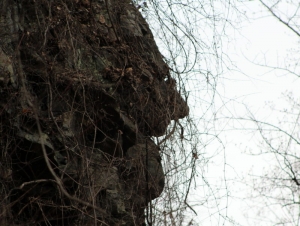
In the summer of 1901, crews were carving a new rail line through the gorge to connect Thurmond with nearby coal operations. Dynamite charges were common along the cliffs, sending dust and stone cascading into the valley. But one explosion stopped the work cold.
As the smoke cleared, workers stared at the exposed cliffside. There, in rough relief, was the unmistakable profile of a man — jutting brow, sharp nose, and a downturned mouth. The resemblance was eerie enough that several men refused to keep working.
Later that day, a telegraph arrived at the Thurmond station: President William McKinley had been shot at the Pan-American Exposition in Buffalo, New York. He would die eight days later from his wounds. For the superstitious, the rock’s sudden emergence was no accident — it was an omen.
The Life and Death of President McKinley
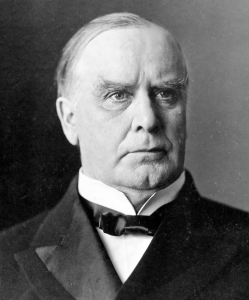
William McKinley, the 25th president of the United States, was a symbol of a growing industrial America. His leadership during the Spanish-American War and his support for business expansion had made him popular, but also a target for anarchists who opposed centralized power.
On September 6, 1901, McKinley was greeting the public when Leon Czolgosz shot him twice at close range. At first, doctors thought he would recover. Infection set in, and on September 14, McKinley died, shocking the nation and ushering Vice President Theodore Roosevelt into office.
That his death coincided with the blasting of the cliff near Thurmond was a coincidence too perfect for storytellers to ignore.
Thurmond: Boomtown to Ghost Town
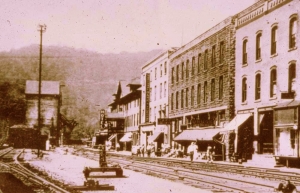
At the time of the creation of McKinley Rock, Thurmond was a thriving rail hub. Trains hauled coal from the New River mines to market, and the town’s hotels and banks bustled with business.
But Thurmond’s fortunes faded with the decline of coal shipments and the rise of automobiles. By the late 20th century, most buildings stood empty, their brick walls slowly crumbling. Today, only a handful of residents remain, and much of the town is preserved by the National Park Service as part of the New River Gorge National Park and Preserve.
Visitors often expect a ghost town to come with ghost stories, and McKinley Rock has become one of its most enduring.
Fact, Folklore, and the Power of Superstition
While no one can confirm whether superstition truly halted the rail work that day, Jodi French-Burr, a tour guide and former park ranger, says the story is now inseparable from the region’s heritage.
“All life stories contribute to a community’s history,” she says. “Even if parts are embellished, they help keep our past alive.”
French-Burr notes that superstition was a powerful force for the immigrant workers who came to the gorge from Italy, Eastern Europe, and Ireland. Beliefs about omens, death warnings, and protective charms were part of everyday life.
“Legends like this make us all wonder what really happened,” she adds. “That curiosity keeps people connected to the past.”
The Science Behind a Face in the Stone
While the workers in 1901 may have seen an omen, geologists see something else: pareidolia — the human tendency to see faces in random patterns. The cliff near Thurmond was made of layered sandstone, and blasting exposed a section where natural erosion had shaped the rock just enough to suggest human features.
Such rock profiles aren’t rare, but the timing here gave McKinley Rock its uncanny reputation. Over the years, wind, rain, and ice have softened some details, yet the profile remains visible from the right angle.
A Hidden Landmark with a View
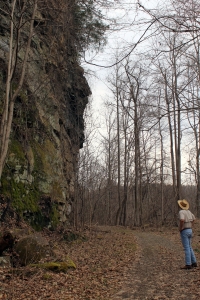
McKinley Rock isn’t marked with a large sign, but visitors who know where to look can find it along the Rend Trail. The profile is only visible from the south and is best seen in winter or early spring, when leafless trees reveal the gorge walls.
The hike is a gentle one-mile walk from Thurmond Road (WV-25) along the flat bed of the old rail line. While a rockfall farther down the 3.2-mile trail blocks access toward Minden, the stretch to McKinley Rock remains open and scenic. In cold weather, the view across the New River is especially clear.
Tips for Visiting McKinley Rock
- Best time to visit: Late winter to early spring for unobstructed views.
- What to bring: Camera with a zoom lens to capture the profile clearly, especially from the south-facing vantage point.
- Combine your trip: Explore Thurmond’s historic depot, walk the Fayette Station Bridge, or visit nearby Grandview for panoramic gorge views.
- Respect the site: The rock is part of the park’s natural heritage — climbing or chipping away at it is prohibited.
Why McKinley Rock Still Captivates
For some, McKinley Rock is nothing more than a geological quirk. For others, it’s proof that the land remembers — that events in human history can echo in the natural world in strange ways.
Park rangers like French-Burr understand the allure: “We know the facts of McKinley’s assassination, but the legend adds a layer of mystery that can never be proven or disproven. That’s what makes it worth telling.”
Preserving Legends in the Gorge
The National Park Service doesn’t just protect landscapes — it preserves the stories tied to them. Whether McKinley Rock was an omen or a coincidence, its tale is part of the identity of Thurmond and the New River Gorge.
Without storytellers, French-Burr warns, such legends fade. “History isn’t just dates and events. It’s the people, the beliefs, and the little stories that make a place feel alive,” she says.
In the end, McKinley Rock is more than just a cliffside profile. It’s a reminder of how history, geology, and human imagination intertwine, and how a single moment in time can echo through generations, high above the river in a quiet corner of West Virginia.
Mysterious stone face attracting curiosity in New River Gorge

FAYETTEVILLE, W.Va.—An enigmatic stone face long ago carved into mossy sandstone along the rim of the New River Gorge is attracting increased attention as tourism grows in the new New River Gorge National Park and Preserve. Its origin story is now attracting attention among artists. READ THE STORY HERE.
Sign up to receive a FREE copy of West Virginia Explorer Magazine in your email weekly. Sign me up!
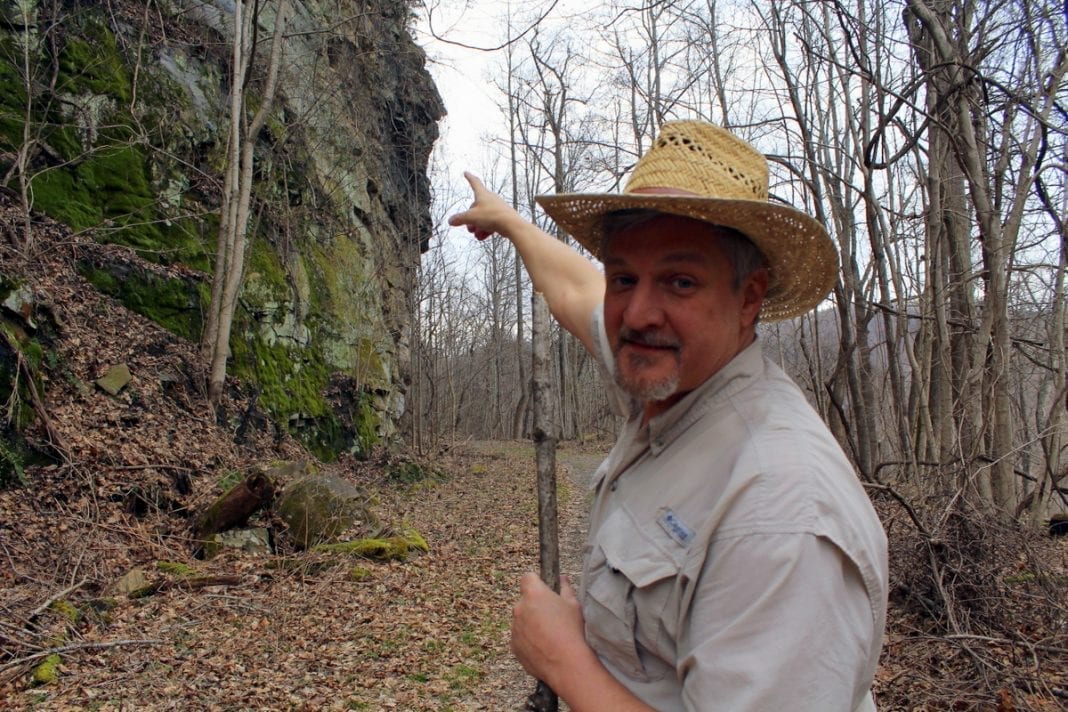

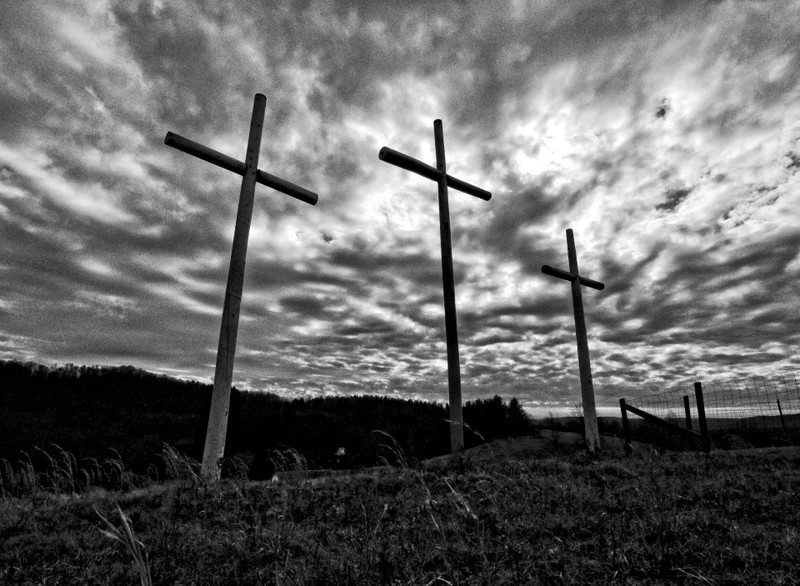
humph====your ai won't let me post a first hand story about the rock.......to bad, thought you folks wanted to save the stories.